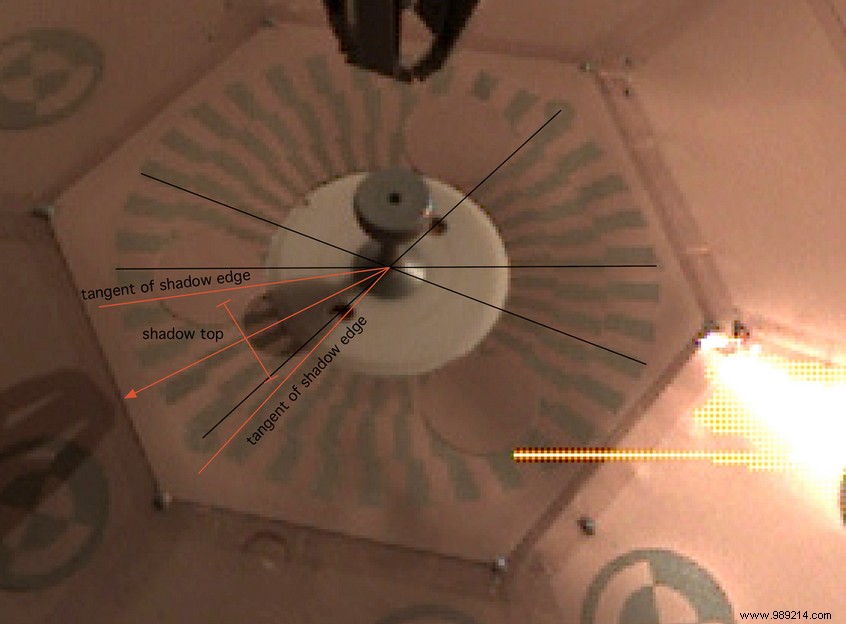The gnomon is a rudimentary piece of wood planted in the ground, very used during Antiquity in Babylon. L The idea was recovered in order to determine the geographic North of the planet Mars as part of NASA's InSight mission.
More than 4,000 years ago, the Babylonians planted a stick vertically on horizontal ground. They then observed its shadow to determine the time, the seasons, but also the geographical coordinates of different places. This apparently very basic instrument has indeed made it possible to determine the first constants of astronomy.
However, during the preparations for the InSight mission (NASA), the engineers thought of two solutions to determine the geographic North of the red planet. As the Paris Observatory explains in a publication of April 19, 2021, the first was to use the probe's gyroscope. The second (the one that was chosen) proposed the use of casting a shadow to deduce where True North was. In addition, the experts wanted an accuracy of less than 5° if possible.
The InSight probe did not have a real gnomon on board, but the principle remains the same. A camera placed at the end of an articulated arm made it possible to observe the shadow cast by the gripping hook of the probe's seismometer (SEIS) on a graduated staff. Thanks to this method, the precision to establish the geographic North of Mars was only +/- 3° , which corresponded perfectly to NASA's wish.

This is an excellent result in the extent to exactly estimate the position of the shadow is not an easy undertaking.
In early April 2021, NASA's InSight lander detected two new “Marsquakes” of magnitude 3.1 and 3.5 . Operations are also underway to try to bury the cable connecting the seismometer to its lander to protect it from the weather. Also remember that the main scientific objective of the mission is to have a better knowledge of the internal structure of Mars. The goal is to better understand its characteristics until now unknown and try to reconstruct its history.